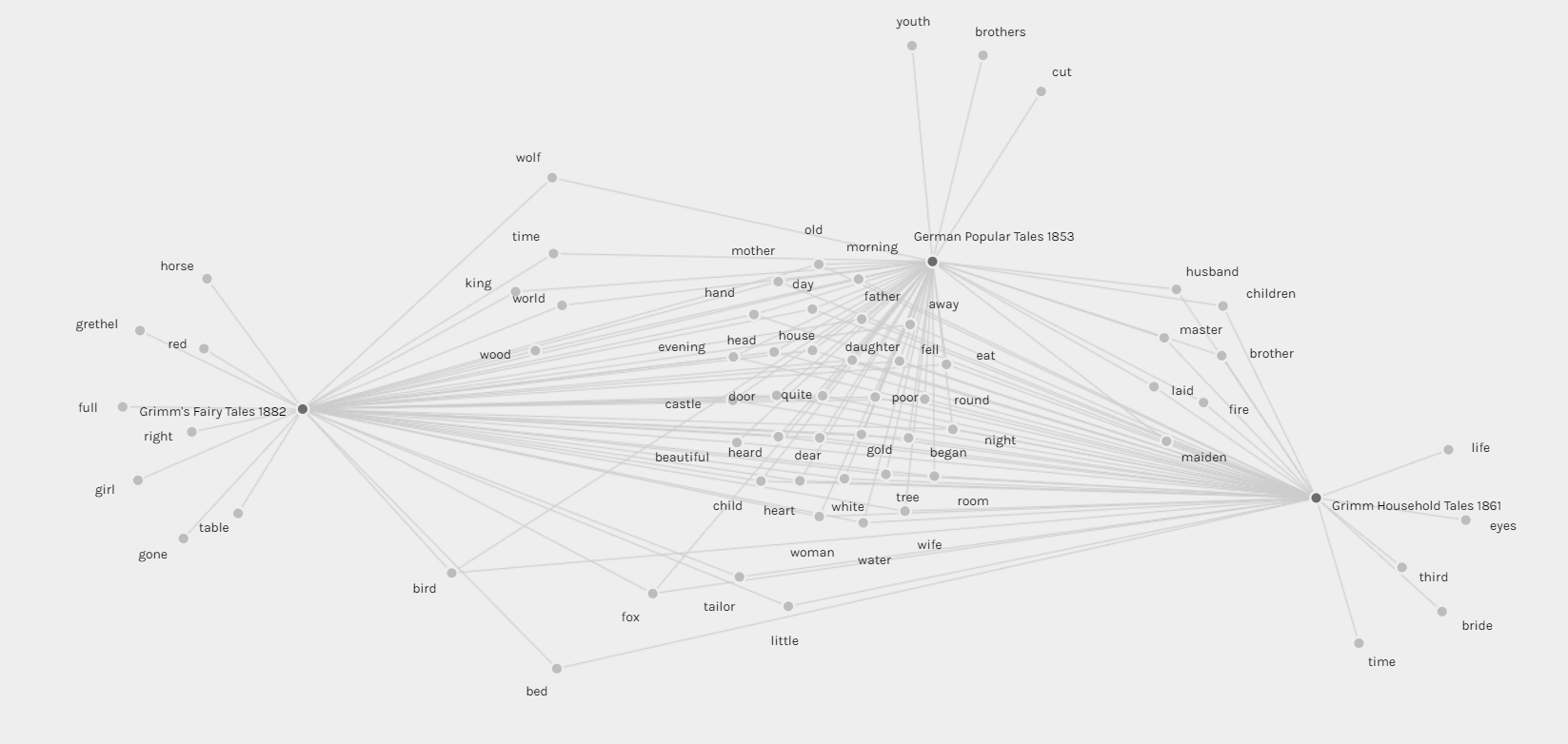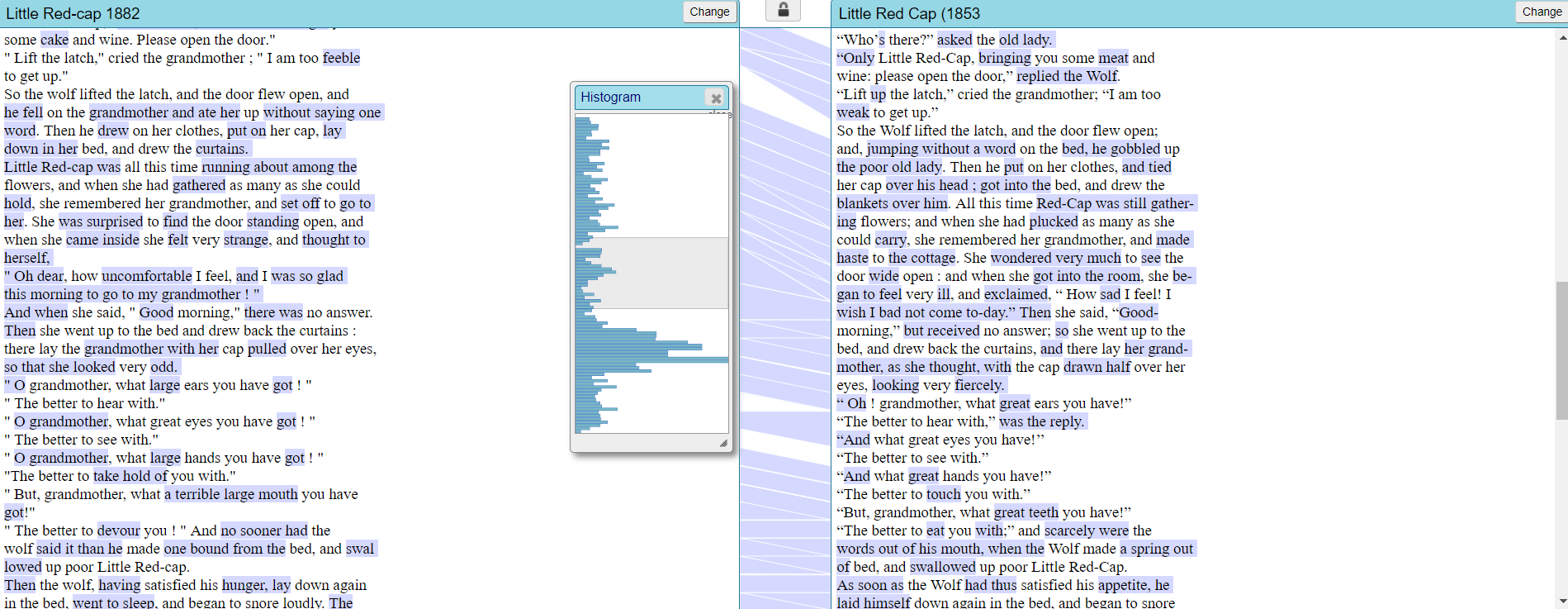Children & Household Tales
While the drop down menu provides glimpses into individual editions and three similiar stories each, this content page displays an overveiw of these editions. Instead of focusing on singular stories, I wanted this page to be the foundation and guiding point for the other pages. It covers earlier versions of the Brothers Grimm Tales and gives an insight into why they were, and still are, so important to the German community.
The Third Reich used adaptations of the Grimms' stories to foster nationalism. Some scholars have argued that the Grimm stories' violent nature and cruelty towards children and women made it psychologically tolerable for Germans to condone atrocities during World War II. Without a doubt, the pages of Kinder und Hausmärchen provide ample fodder for assembling a list of horrors. Per Linda Dégh, "Leafing through the pages, the reader will find no end to child abuse: torture, mutilation, abandonment, expulsion, and killing of children by parents. Children are sacrificed for the well-being of a friend; older brothers are condemned to death at the birth of a daughter; a child is fed to the father by the mother; a daughter's hands are cut off by the father." (Dégh, 94.) In spite of, or perhaps because of the numerous atrocities contained within, the Nazi Party decreed that every household should own a copy of Kinder und Hausmärchen.
The following image is a screen capture of the fifty most common words utilized in three of the different editions of Brothers Grimm. Words like father, brother, mother, and child are all connected and are a common element to the editions. Furthermore, some other common elements that would more likely be associated with a rural life style are poor and old. This network analysis is interesting, because it also shows what is different in each edition. For instance, the 1853 version was more interested in youth and brothers, while the 1882 version uses words such as girl, red, horse more often. Although we cannot definitively tell, these connections could be showing what was more significant to Victorains than previous generations, or, what previous generations considered vital to their identity.

1853, 1861, and 1882 Brothers Grimms' Tales
Fairy tales have always been adapted and repurposed to fit the cultural industry and the new forms of storytelling that have taken shape as technology progresses. By exploring fairy tales, it becomes possible to interpret what was important to the culture that presented the story and why, when the tale was adapted and reused later if any of the changes were deemed necessary for the retelling of the anecdote. The Brothers would eventually fit the developing morals of the German bourgeois middle class into their stories in order to make the tales relatable to Christian values, the Protestant ethic, and to provide children with morals and lessons. This desire to fit to societal norms can be seen through the variations of each text. The following interactive Voyant tool provides a glimpse into some of the trending words of the 1853 version "Grimms' Household Tales" and can be adjusted in the drop down menu to use other interactive tools.
Entire 1853 version's trending words
A complete textual analysis of all the different variations of the Brothers Grimm would be nearly impossible to conduct due to the the amount of editions that are available, and the continued growth and adapatation of these stories are still going on today. So, for my research I looked at four different versions of the Brothers Grimm. Two of the versions were edited by the Brothers and compiled during their life time. The first one was the original collection developed in 1812 and the next is the 1853 edition - one of the last ones edited during their lifetime. The next two versions of texts were edited after both of the Brothers have passed away. The first one in 1861 does not deviate too far from the 1853 version and will not be looked at too much. The last version, edited in the 1880s, was edited during the Victorian era, a period that is characterized by a distinctive mixture of prosperity, domestic prudery, and complacency. Furthermore, due to the length of the texts, I also only look at the first volume of the tales. The following image is linked to juxtacommons.org and currently shows the side-by-side comparison of the 1853 and 1882 versions of "Litte Red Riding Hood". By clicking on the image you are taken to the website and can also change the edition of the story and look at a side-by-side view of the 1861 version as well.

Click on image to interact with side-by-side comparison of three verisions of "Little Red Riding Hood".
All sources utilized can be found on the Sources Page.
